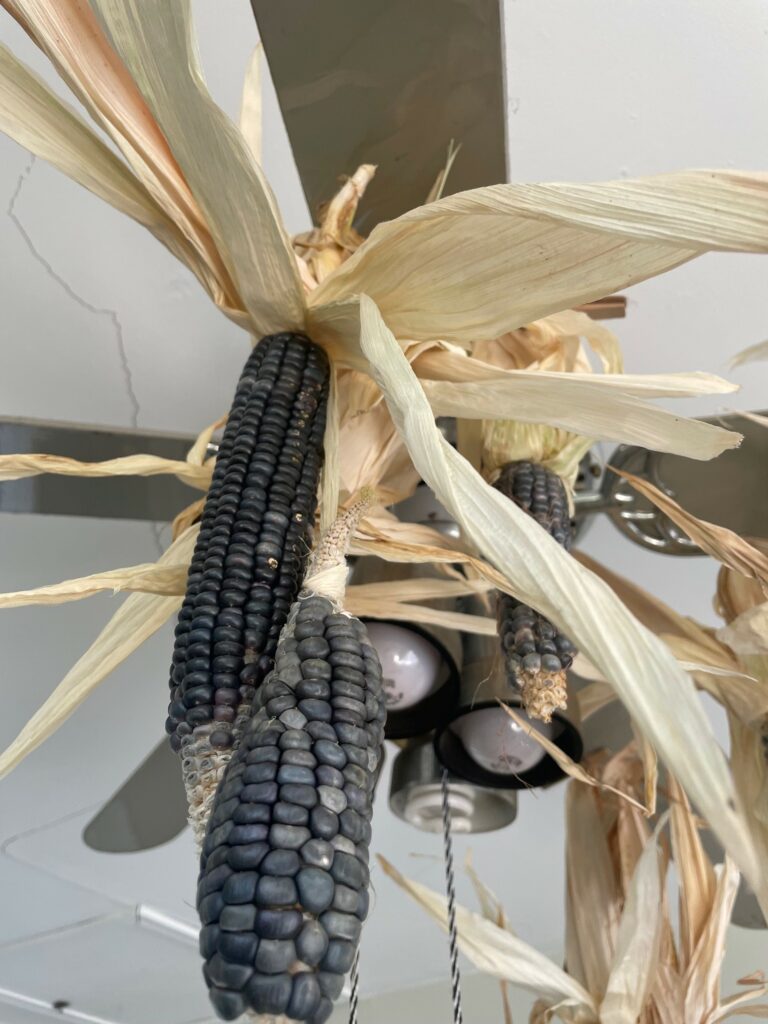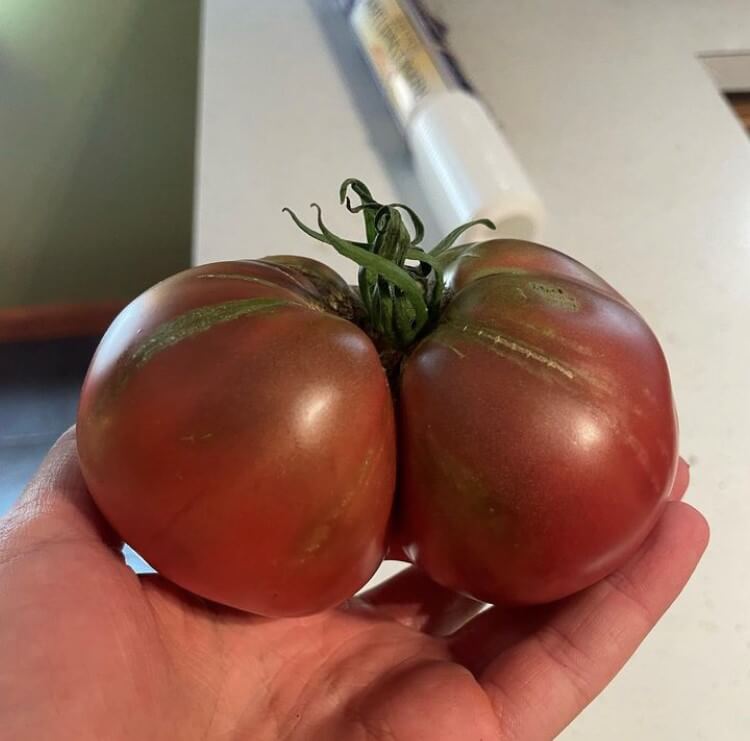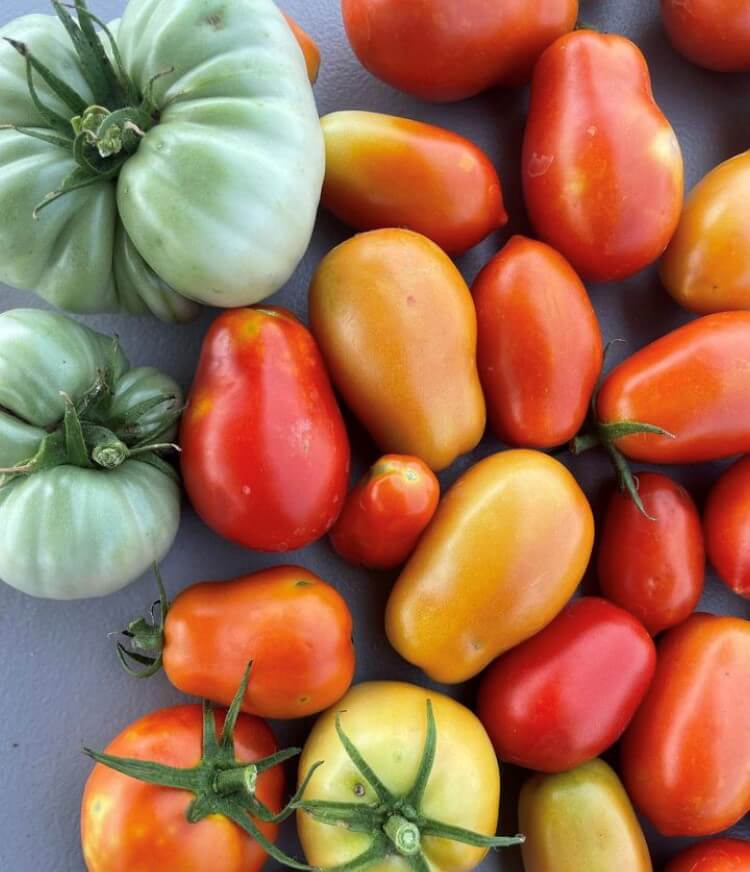Introduction
As many of my readers may know, spring will be here before we know it! For us more serious gardeners here in the Midwest, we all know that some plants need to be started or directly sowed in mid-late March (or sooner in some instances) to ensure proper growth/development for a more predictable yield. With the recent warm front that moved in the current temperature has me remembering back to the warmer days of last summer and my personal green escape from the daily stresses of life. I still need to design my garden beds (which I have a blog about 5 things to consider while designing your garden) and figure out how many plants I can actually fit in my garden after compulsively buying over $100 worth of seeds from various companies.
One thing I will note is that every seed I bought was an heirloom variety. What is an heirloom variety you may ask? An heirloom variety is as the name suggests. A “old” variety that maintains genetic consistency (depending on mutations or cross pollination) in an open pollinated setting in which seeds are able to be dried and saved for the next growing season(s), often being passed down through family members. Many of the heirloom varieties were lost throughout the years or made nearly extinct, but some were revived when people began exchanging seeds and bringing old seeds from basements and attics that hadn’t been touched in decades.
Many of these seeds were grown for hundreds if not thousands of years ago here in the new world and old world. I only recently learned about heirloom seeds and how they were different from modern hybrid varieties and GMOs (genetically modified organisms). The differences between the 3 types of seed may seem confusing, but I will break it down. First, I will start with the easiest one to define, hybrid seeds. Hybrid seeds are the product of two different varieties of the same or different (but closely related) species producing viable offspring. For hybrid seeds from different varieties of the same species the offspring will have a more unpredictable genotype (genetic traits) and phenotype (physical traits). Typically in biology hybrid offspring between two different species are either unviable or made infertile and unable to reproduce.
Next I will cover the topic of GMOs (briefly); GMOs are often a hot topic or buzzword used to spark debate about the quality and safety of our food system here in the United States. These plants are created using various methods of genetic engineering to change or alter segments of DNA in order to purposefully select genes associated with positive traits. This is more advantageous than traditional attempts at selective breeding (artificial selection) as oftentimes during selective breeding other (recessive; non-dominant/non-expressed) traits are accidentally selected for on occasion, thus showing the advantage of genetic engineering over the previous common method. Often GMOs are used on a small number of crops, most of which are used as ingredients for foods/products.
Lastly, heirloom varieties are often debated in regards to the age a variety must be in order to be classified as “heirloom”. Often, heirloom varieties can often be traced back over 100-150 years here in North America, typically having some connection to various Native American groups/cultures, but in other parts of the world (such as Eurasia or African regions) heirloom varieties can go back hundreds, sometimes thousands of years. It seems as though heirloom varieties are just the product(s) of generations of selective (artificial), and environmental selection based on what the humans and environment needed/could support.
Now that I have touched on the differences of plant types/seeds and a given a brief refresher of high school genetics/biology I will now begin to actually dive into what the purpose of this blog post is about. The goal of this week’s blog is to bring awareness to the importance of preserving heirloom varieties. The 5 reasons why you should grow heirloom varieties are as mentioned, they have deep connections to various cultures, hold large amounts of genetic information, add variation/flavor to our cooking, add food personal/global food security, and are usually more sustainable/hardy (when grown in certain environments).
1. Preserves Culture(s)
One of the best examples of how growing heirloom varieties preserve culture/tradition is in the story of various corn, bean, and squash varieties here in the United States. Many of these varieties hold a sacred connection to many indigenous tribes as many tribes relied upon the harvest of said varieties to get them through the winter or hard times. I mentioned the revival of the sacred Pawnee eagle corn in my previous blog, “3 Indigenous Corn Varieties You Should Consider Growing”, in which the variety was saved from only a small jar of seeds, but now is being grown in high amounts as to reintegrate their culture’s traditional foods back into the diets of the Pawnee people.
It seems that a lot of the non-nomadic Indigenous cultures that revolved their life or tradition around their corn variety/varieties seem to have ancestral stories of corn and the significance of corn (as well as other varieties) to the group of people growing them. This is likely to reiterate the overall positive impact that corn had on the various cultures as I am sure it kept them from going hungry during the most troublesome of times.
I think it is safe to say that had these seeds not been found or regrown that a relatively big part of various tribal cultures would be missing a large part of their cultural heritage. The modern revival of growing heirloom seeds has not only brought back the seeds from near extinction, but also spread awareness of their significance and ancient roots to the groups of people who grew them.

Hopi Blue Flour Corn
2. Preserves Genetic Diversity
As I mentioned in the introduction, heirloom sees are the products of generations of selective selection based on both human and environmental pressures. Often these plants contain genetic information linking them to the wild type ancestor. It is well known in the biological community that the more genetic information/diversity within a species/population the better as it is observed within populations of organisms who lack genetic diversity there is a reduced fitness and reduced change of adaptation if/when an environment changes leading to a potential wipeout of said population unless immigration or random mutation.
Since these varieties were the end products of an ongoing experiment for hundreds and sometimes thousands of years it is safe to say that there was a lot of mixing and experimenting going on with various varieties of the same plant species. Humans were rewarded for their efforts as they were reliant on these crops in the past as they were not given the luxuries of modern day conveniences in regards to herbicide, fungicides, or fertilizers. They relied on the varieties they grew for a “predictable” yield and their temperament to the weather.
3. Added Variation in Taste/Appearance
Despite creating sustenance and a relatively reliable yield/production (depending on environmental/soil conditions), heirloom varieties typically add more diverse compositions of flavors and appearances. Many of the varieties were not only chosen to produce the highest yield. Many of these varieties were selected for their flavor, appearance, and shelf life. Culture ties into some of the reasons why these varieties appear the way that they do, but often the bigger focus is taste/function of said crop product.
I encourage you to look into the heirloom variety of beefsteak tomato known as “Cherokee Purple”. This monstrous tomato has been described to look as though it was a leg bruise. It is a deep purple/red color with streaks of green from the crown and is usually oddly shaped as it has a tendency to grow is odd ways. I personally grew the tomato variety last year as I mentioned in my previous blog, “The 2 Tomato Varieties I am Growing This Season (2023)” and the tomato had a sweet, smoky flavor, with lots of juice, perfect for sandwiches and other dishes in which tomatoes are used to compliment.
4. Added Food Security

Cherokee Purple Tomato
It may seem obvious that these somewhat ancient varieties of crops would harbor more genetic diversity and offer a more diverse color or taste than the common varieties offered at the store, but few consider the other benefits that the mere possession of these seeds offer. Just owning and possessing some of these seeds increases the security of your pantry. There are various historical accounts that show reason behind the importance of seeds. Historically across the United States during the transatlantic slave trade as well as the trail of tears it is evident that people brought with them the seeds of their common food so that they could grow them in the future. This was a layer of added food security despite the circumstances of the time.
I often tell people that if I had to leave my home or if my house was on fire one of the first things I would grab would be my ever-growing collection of seeds. When properly stored many of these seeds can last between 2-5 years or longer! If you have the space, knowledge, and knowhow you can easily grow and store enough food for a few people on a couple of acres depending on the type’s food that you are growing.
5. More Sustainable/Hardy
Another reason why heirloom seeds are better for food security is that when planned/chosen for correctly some of these varieties can withstand flooding and/or be tolerant of drought. It also helps that all of these seeds can be saved and planted again (if you prevent crossing between varieties), reducing the carbon emissions generated from buying seed perpetually from big box stores or online. Many of these heirloom varieties can be selected to be made more disease and insect resistant overtime with generations in a location, though typically hybrids have more of an innate resistance to these issues.
Conclusion
Heirloom seeds hold a colorful background tied to diverse groups of people and cultures. Some argue that the future of food relies upon the seeds of yesterday due to the more extreme, unpredictable weather patterns brought on by climate change. Many are beginning to look towards heirloom seeds (grains especially) as a solution to these issues. These varieties lack anything but color and taste and they can preserve the genetic diversity needed to keep a population/species alive. Along with the previous benefits comes the added security that is given to you when you get your hands on a few heirloom seeds.
I hope that you consider taking control of what seeds you choose to plant in your garden and really take ownership of your own personal food security in the near future. You never know when times will get a bit tough and you may be relying on food from the garden a bit more than you have in previous years/decades.
